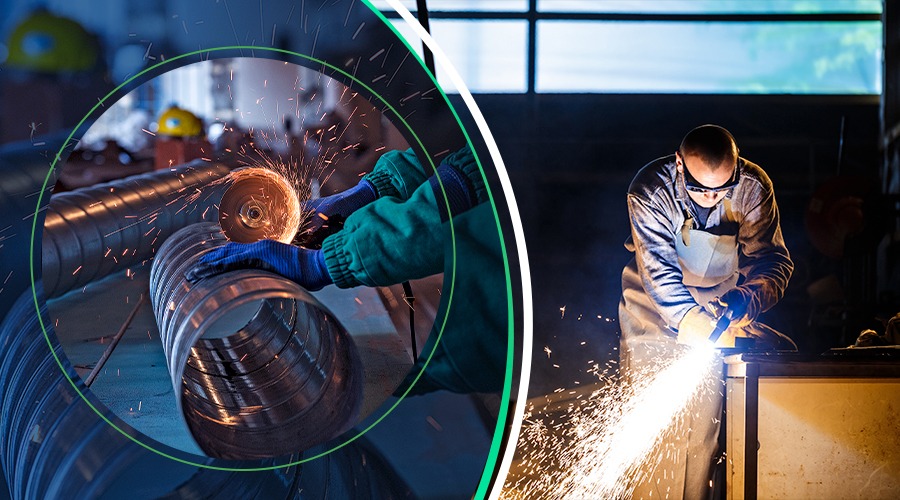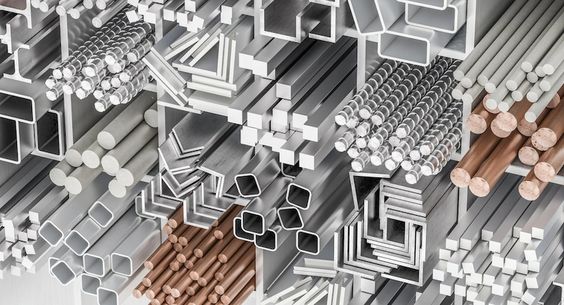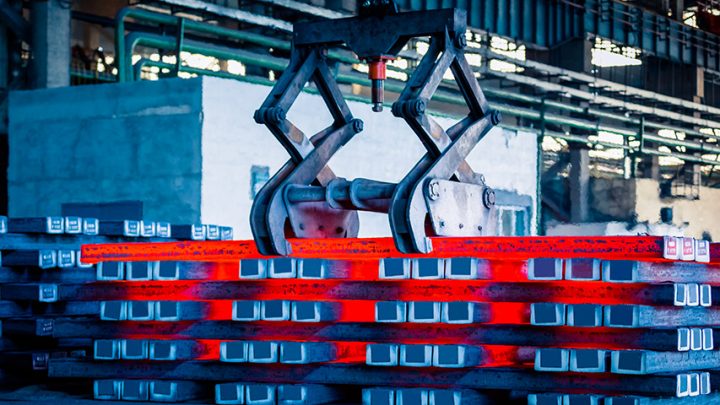It is not new that metal is one of the most important materials in factories with giant machinery made out of metal and in homes. Almost everything we use is made from metal or out of the machinery that is.
In this blog, we will look into the details that what goes on in fabrication shops. You can also expect to read about the various industrial applications of metal fabrication.
What is metal fabrication?
It is basically forming metal into different shapes so that it can be further molded into end products. In other words, it is pre-forming the rudimentary metal piece into shapes for intended uses. This is done by specialized tools with which different types of operations are carried out on the metal. Such procedures involve cutting, bending, piercing and finally, welding. Metal manufacturers in India make sheets, wires, rods, bars, panels, plates and so on.
Pre-forming is half a way, the other half involves welding or machining the segments into a finished product.
What goes into various methods of fabrication?
Different processes require different machinery.
Cutting– there are a variety of tools to carry out this process. The manual tools that are utilized for cutting little sections are band saws and chop saws. In order to cut large pieces, cutting torches like plasma torch, laser torch, water jet cutting tools, as well as burn tables, are pretty common.
One type of cutting is shearing. In it, long cuts are drawn through the axis of metal in order to slit out the edges. One of the methods by which it can be performed is by installing the metal sheet in the cutting tool in such a way that the tool runs through the sheet in the vertical direction.
Forming and welding– this is done with the purpose of turning metal sheets into angled objects by bending the metal at pre-decided angles. It is to say that a 2-D sheet is formed into a solid, life-like form. Automation is necessary for such a process since it needs a definite amount of force in a determined direction. Manually, such a process is almost impossible to carry out without deforming metal. Forming is also known as folding or bending.
Once the metal is formed into the desired shape, different parts are joined together to make an intended product. Joining two or more metal sections together is called welding. Segments like a bar, a panel or a rod can be welded together. There is a plethora of methods such as gas metal arc, laser, gas tungsten, shielded metal arc and so on through which the purpose of the weld is achieved. However, every method is based on the principle of heat application.
Specialty fabrication processes
- Stamping– is a procedure where a certain portion of metal is elevated with specialized tools. This is similar to making punches in metal sheets but the only difference here is that it is to be done without perforation. Stamping is vastly used to form raised letters or numbers on automotive parts, bearings, metal casing on various products, ornamental items, and many more.
- Blanking– is a metal manufacturing process where a part of the metal is chipped off by machining to obtain the desired shape. It is one type of stamping.
- Punching– the method where holes are pierced into the metal sheets, panels or bars in order to accommodate screws, bolts, or some other fasteners.
- Powder coating– a powdered polymer is applied to the metal surface under pressure for finishing. It is mainly utilized to coat automotive parts, bicycles, and appliances used at home.
- Casting– it is a metal forming process where molten metal is poured into a prefabricated mold. It becomes rigid and takes up a shape of the negative impression of the mold when allowed to sit at room temperature.
From the conventional metal processing methods, the products on hand are not the end products. These raw materials are then gathered for assembly. Check out the well-curated list of popular metal suppliers on enggpro
Various sectors where metal is trending and the demand is ever-lasting are listed here:
- Automotive– the fact that the automobile industry is ever going to need metal fabrications is indubitable. From panels and frames to engine construction, it needs metal parts for every reason.
- Mining– there is no chance that mining is going to stop and the days are unforeseen where metal tools and equipment will be replaced by any other material. The durability and sturdiness of metal are requisite to drill down the rocks.
- Shipping industry- From cargo containers to their fasteners, everything in shipping requires durable material. It is clear that almost every part of the ship has to be metal.
The aircraft is made of light-weight metals and this is never going to see a doomsday. Other than these industries, there are literally thousands of sectors where metals are used in one way or the other. With abundant applications of metal across so many industries, it is imperative to fabricate them in tons.
There are so many metal fabrication workshops that will make products as per your requisites. Visit enggpro which is one of the largest online yellow pages, and find such established metal fabricators across the globe.



